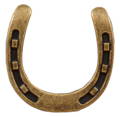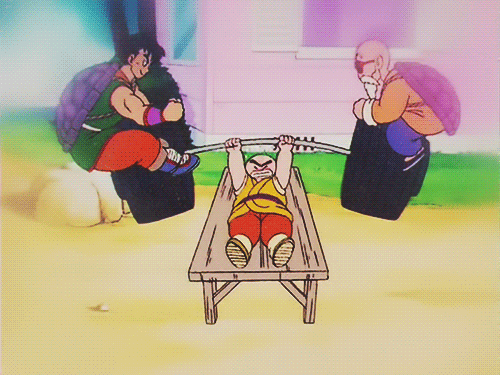5 Exercises To Increase Bench Press
Maybe your bench sucks. Maybe your pecs still look like they did in 7th grade. Maybe your shoulders are pathetically weak and your triceps have nothing hanging over the elbow. You are getting sick of going to the gym and watching a 9th grader rep out 225 lbs while you are getting pinned with 205 lbs on your chest. This might be things being dealt with; a real-life struggle.

When we talk about the bench press, we have to think about mechanics. There is a technique involved in the movement. We have to focus on the movement pattern. We have to get the movement patterned ironed out. We don’t want the elbows flaring out all over the place and we don’t want our elbows pinned down against the torso. We want a nice happy-medium position.
We want the upper back to retract with the lats forming a nice foundation to press. We want the triceps to be strong, the shoulders are strong, the pecs are strong, and every muscle involved co-contracts to smash that weight right off the chest. This way we can keep growing and increasing the bench press to the point where 405 lbs are being repped out and pushing benching 500 bills.
That’s where these five exercises come into play. These exercises will target each and every point in the movement to help lead to a massive PR.
1. Banded Dumbbell Bench
A lot of athletes when doing dumbbell bench presses or starting to fatigue in a standard barbell bench tend to round their shoulders and upper back. This causes a loss of integrity all throughout their lats, rhomboids, and scaps. This eliminates the foundation to be able to lockout causing the loss of a rep due to poor mechanical execution.
That’s where the banded dumbbell bench comes into play.
Younger athletes or athletes who tend to have shoulder pain bench pressing, it is most likely because athletes are failing to retract the scaps and open the chest up as if the sternum is coming up towards the ceiling. So we like to put a band around the wrist, maybe a little bit between the wrist and the elbow, holding the dumbbells in almost a neutral grip position.
As we do the eccentric muscular action, the band is going to come down and almost drape over the sternum, but because the band is on the forearms, and we are keeping the dumbbells apart, we will feel the rhomboids, scaps, and lats retracting. This will teach us how to hug the bench and really drive the body into the bench as we move the dumbbells away from the torso.
The banded dumbbell bench is a great movement to utilize to teach the body better mechanics and positioning. It is also a way to train the upper back to be active with the pecs, shoulders, and triceps.
Do this movement once a week for four or five sets of seven reps with one drop set of twenty. It will blow up your bench press over a six to a seven-week timeframe.
2. Decline JM Press (W/ Sinful Chains)
We are not a fan of this movement when being performed on a flat bench or even on an incline because it can bang up the elbows. Now on a decline bench, the JM press (bringing the barbell down to the throat) does not affect the elbows nearly as much. The other reason we love the JM press is that it teaches the triceps how to freaking lockout and accelerate through the finish.
Typically at Garage Strength, we don’t like utilizing accommodating resistance (bands and chains). However, sinful chains in conjunction with the decline JM press can blow the triceps up. It will help form that massive horse-shoe of a muscle every meatstick wants. This will help the tricep become extremely strong to be to lockout and accelerate the final position of the bench press.

Make sure to be stable performing this movement. Do this movement once a week for four to six weeks at a time and then take it out of programming for four to six weeks. Four to six sets are enough volume, just monitor elbow pain while the movement is within the programming.
3. Cambered Incline Chest Row
Yes! A chest row to improve the bench press!
Charles Poliquin taught that standing or seated dumbbell external rotation will actually improve the bench. It is another movement that stabilizes the shoulder a little more for more stability to allow more power output from the prime movers. That is where we are going with the cambered incline chest row.

We want the incline and the chest row with the cambered bar to increase the range of motion. The big focus is to go through a long eccentric to target the upper back with the lats. This is the exact same thing we want to do when benching.
After the long eccentric, we want to come to the top, go through the concentric action, squeezing at the top, squeezing the scaps around the spine, activating the lats all throughout the entire shoulder girdle. This is the same feeling we want to have carryover to the bench. Not only are we strengthening the muscles, but we are creating the same position and feeling to be transferred over to the bench press. The movement is teaching the feeling while strengthening the entire region.
Because the lift is using slower twitch muscle groups, especially with the lats, we can do the movement two to three days a week for multiple sets of fifteen to twenty reps. It will pay off in huge dividends to build that yoke and increase the bench press.
4. Football Bar Floor Bench
If a football bar is not available, use dumbbells with a neutral grip, reverse grip, or a close grip on a normal barbell. We like the football bar with a fat, neutral grip because it is less stressful on the shoulders.

A key factor behind the floor bench, especially athletes who are good off the chest but then die, we want to force them to pause with their elbows flat on the floor. We want them to keep doing this for high, high reps. Five sets for twelve to seventeen reps and with the last two sets getting close to failure or even failing.
The high reps are great at fatiguing the triceps, leading to greater muscular size which in turn leads to greater power output and an increase of the weight put on that bench press.
5. Rapid Bench / Bench Throw
We have a unique machine at Garage Strength called an XPT. The cool factor behind the XPT is that we can click on the handles and do rapid bench presses really quickly with a focus on the amortization phase right off the chest.
When we lengthen the pec, when we lengthen the shoulders and the triceps, that is when we will recruit and coordinate a little more aggressively. Each rapid rep leads to more and more recruitment. Now we want to toe the fine line so that we don’t over fatigue the muscular group, so we might do three or four reps quickly, and then on that final rep, we want to accelerate through the entire finish, hammering the long acceleration through full extension.
This will train the pecs to be stronger right off the chest, improving that area. Accelerating through the finish will help the lockout. This is a movement that is so specific that it will increase both ranges people struggle with bench pressing. Think of it as similar to a technical coordination movement like a snatch, clean, or jerk.
Do this accelerated, repetitive movement for five to seven sets for four to five reps. The first three to four reps are rapid with the final rep being the throw.
Recap
Recap
The bench press is the Godzilla of meatstick lifts. Every person who asks, “How much do you lift?” indirectly is asking, “How much do you bench press?” Yeah, it is a little ridiculous, but instead of resisting it is time we start accepting the reality. So instead of shying away from an answer, in fears of appearing weak, go ahead and utilize these five exercises and respond with confidence and let all the swole brothers, sisters, and non-gender conforming people out there how strong ya’ are.
DANE MILLER
Dane Miller is the owner and founder of Garage Strength Sports Performance. He works with a select handful of clients on building comprehensive programs for fitness and nutrition. Several times a year he leads a workshop for coaches, trainers, and fitness enthusiasts.


